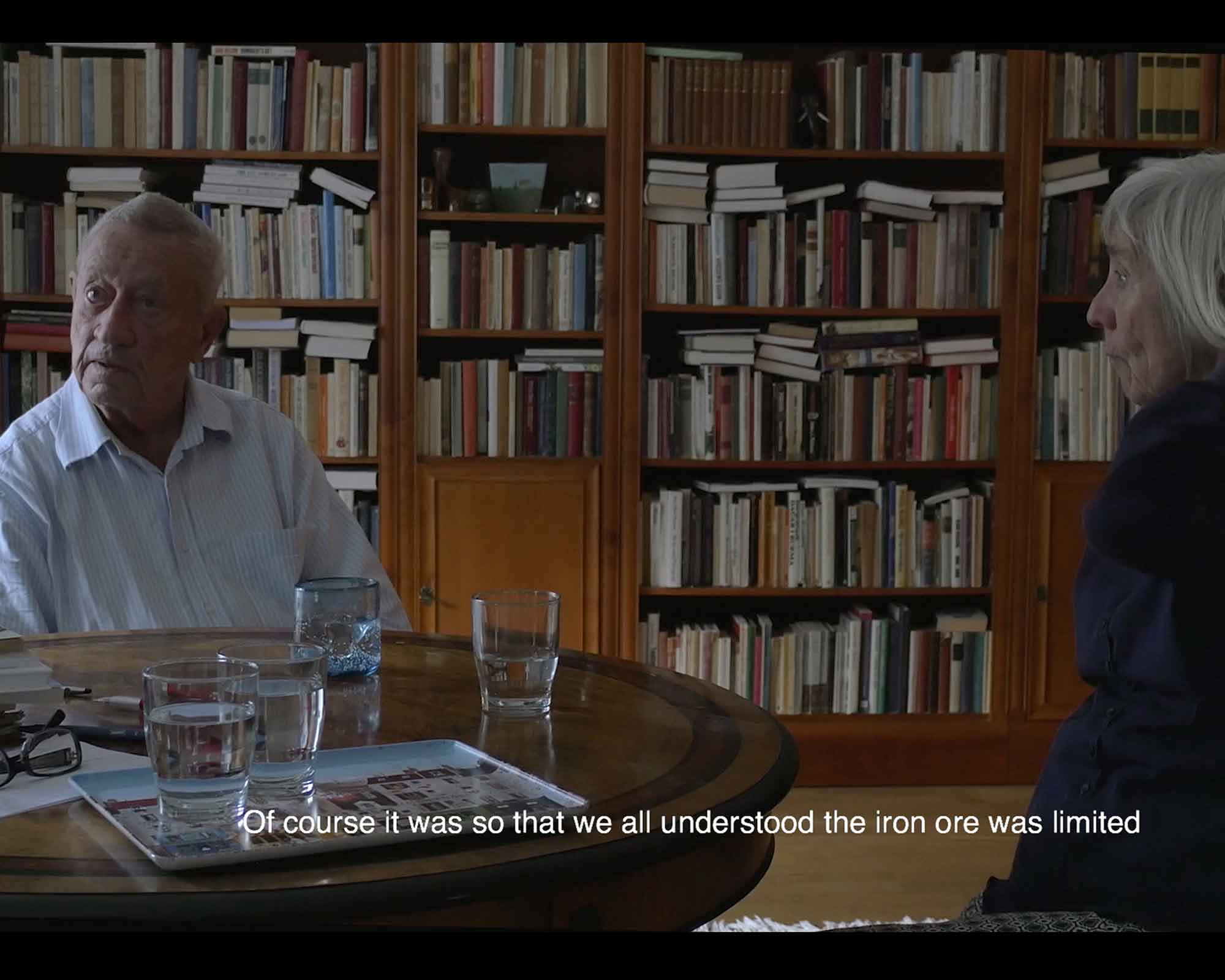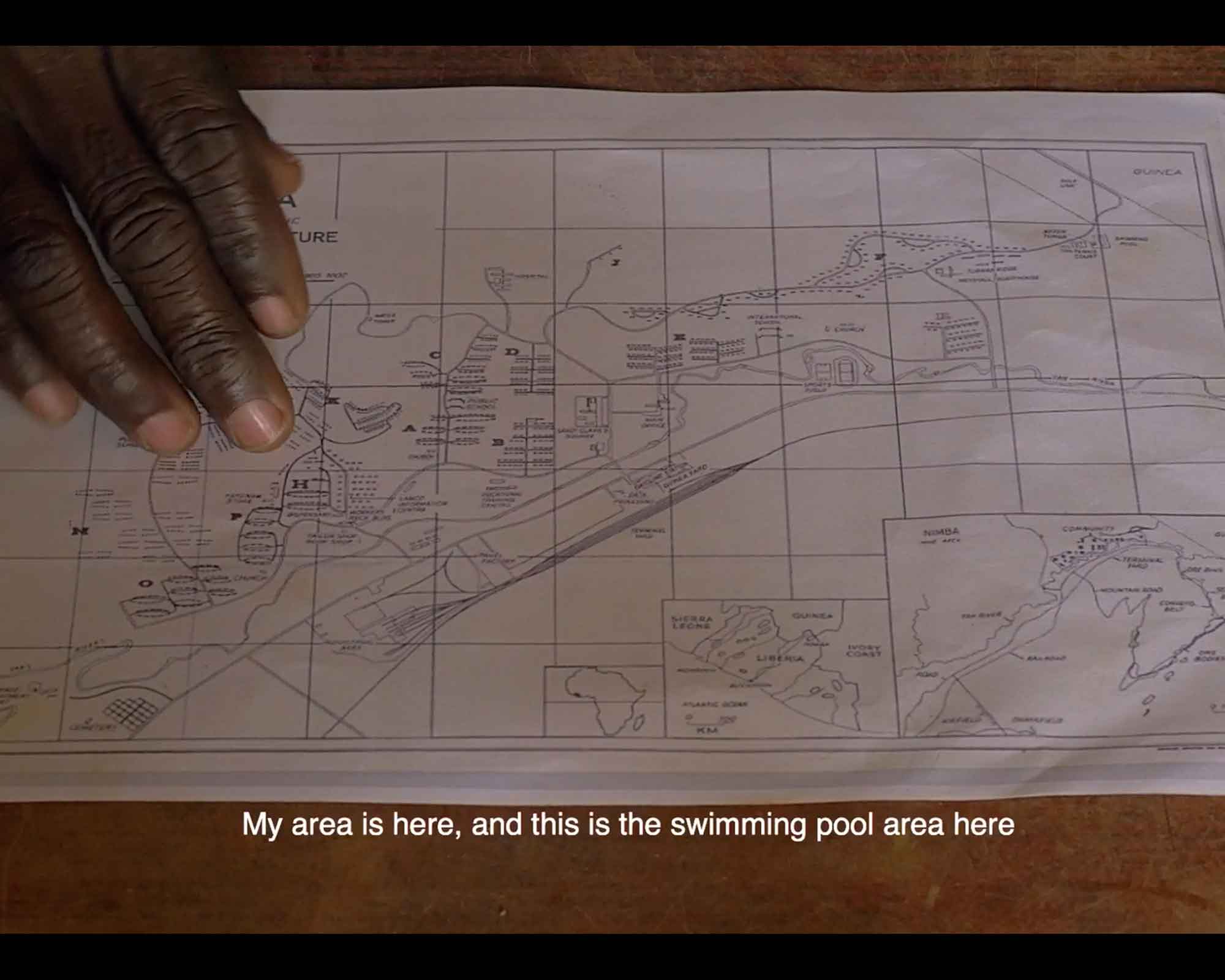- Login
Critical Spatial Practice






‘The transformation of the surrounding areas, which a few years ago was an uninhabited mountainous region – considered the home of demons and devils by some of the indigenous inhabitants – and the realisation of what technical know-how and perseverance have brought about, fills with one admiration for what man can do.’
William Tubman, President of Liberia, Speech to LAMCO Executives, 1962
Uppland: enframing an architecture of ‘Development’
In 1955 a Scottish geologist called Sandy Clarke travelled to Liberia speculating on behalf the Liberian-American-Swedish Mining Company (LAMCO). He and his team had been having little success before journeying to the remote mountainous region of Nimba. On Christmas Eve, while on a bush trail up the highest peak, Clarke discovered the largest body of ore he had ever seen.
From Clarke’s discovery emerged a company new-town, derived in name only from the displaced Mano community of ‘Yeke’pa’. Rebuilt along high-modernist lines, Yekepa’s ‘western style’ architectural and urban scenography garnered the title of ‘New York of Liberia’, drawing families near and far to resettle and service its mining operations. The displaced Mano community, resettled out of view of Yekepa, rebuilding the settlement they called ‘New Yekepa’.
Following Clarke’s calculations the ore began to run out, and in 1989 LAMCO ceased mining operations. Today Yekepa is almost entirely abandoned, its buildings empty and facilities left to ruin. Exploring the site today, Uppland tells a story of colonialism, of environmental destruction, an elusive beast and the empty promises of industrialization, renewed by interests in Liberia’s cheap, high-grade ore now required for Chinese urbanization.
A collaboration between architect Killian Doherty and filmmaker Edward Lawrenson, Uppland features interviews with members of this Mano tribe, as well as former LAMCO employees, alongside Super-8mm home movies and archive photography.
‘Enframing’ as geographer Derek Gregory notes ‘is to both to set the world up as a picture and to treat the world as a picture’. (1) The frame, as a space of constructed visibility, is a device integral to the reductive allure and violence of colonial modernity. This film explores the invisible, beyond the colonial frame, using memory, voice and absence to reveal Yekepa’s present deprivations. Using the scale of architecture as a scenography of ‘development’, the film narrates the broader assimilation of African geographies into a global capitalist system.
(1) Derek Gregory ‘(Post)Colonialism and the Production of Nature’ in Noel Castree and Bruce Braun (eds) Social Nature : Theory, Practice, and Politics (Malden, Mass.: Blackwell Publishers, 2001), pp .84-111.
Killian Doherty is a qualified architect that practices in Sierra Leone, Liberia, and Rwanda. Through his practice, ‘Architectural Field Office’ he explores how in ‘development’ policies produce unevenness within cities, settlement and land-use practices in the Global South. His architectural work, teachings and research have been exhibited at the ICA, the Venice Architecture Biennale and appear in Japan Architecture + Urbanism (JA+U), Architectural Review, MAS Context, Footprint: Delft Architecture Theory Journal, VOLUME and ‘Afritecture: Building Social Change.
Killian is completing his PhD by Design at the Bartlett School of Architecture (UCL) and attended the MA Architectural History/site-writing class in 2015. He is currently Lecturer in Architecture and Urbanism at the Edinburgh School of Architecture and Landscape Architecture (ESALA).
www.architecturalfieldoffice.org
Edward Lawrenson is a Scottish filmmaker and writer based in London. His films have played at a number of festivals, including Sundance, BFI London Film Festival, the Venice Architecture Biennale, True/False, Open City; and cinemas, including the Museum of the Moving Image in New York and London’s ICA. He has also made radio documentaries for BBC Radio 4. Lawrenson’s 2014 documentary Abandoned Goods (codirected with Pia Borg) won the Golden Leopard for Best International Short at the Locarno Film Festival and he was named as one of Filmmaker Magazine’s ‘25 New Faces of Independent Film‘ in 2015.
Lawrenson has written on film for a number of publications, including Sight & Sound, Film Quarterly and Screen International. He was deputy editor of Sight & Sound from 2000 to 2006. He is a programme consultant for BFI London Film Festival and has programmed for the Edinburgh International Film Festival.
He is a Senior Lecturer in Filmmaking and Kingston School of Art, Kingston University. Lawrenson has also taught at the Royal College of Art and the National Film and Television School.
As a European architect practicing within the ‘development’ environments of Sub-Saharan Africa I struggle to find a neutral-objective voice. Development is fraught with civilizing pathologies of colonialism that are obscured by neo-liberal discourses of humanitarianism and prosperity. Through critical spatial practices, my work has been able to find a distance between my traditional role as designer of buildings in these contexts and this voice, but within close proximity to understand the relations between ‘development’ built environments and colonial histories, discourses and sites of exploitation. Working with a film-maker from behind the lens, voice is given creative space to reflect and manoeuvre.
V. Y., Mudimbe, The invention of Africa: Gnosis, philosophy, and the order of knowledge (Bloomington: Indiana University Press, 1988).
Henri Lefebvre, ‘Notes on the new town’ (April 1960) in Introduction to Modernity Twelve Preludes September 1959 – May 1961, (London, New York: Verso, 1995) pp. 122–124.
‘Land of Liberty’, (1958) Swedish Film Archive, Stockholm.



































































